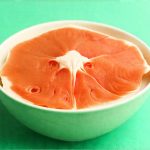Meal-Safe Additives That Don’t Disturb the Bladder
Living with bladder sensitivity – whether due to Interstitial Cystic Syndrome (IC), Overactive Bladder (OAB), or simply a heightened awareness of bodily functions – often means navigating a complex relationship with food and drink. Many common ingredients can trigger symptoms like urgency, frequency, or discomfort. While dietary management is highly individualized, understanding which additives tend to be better tolerated can significantly improve quality of life. This isn’t about elimination diets necessarily; it’s about informed choices and minimizing potential irritants. It’s important to remember that everyone reacts differently, and what bothers one person might not bother another. Careful self-monitoring is key.
The challenge lies in the sheer number of additives present in processed foods – from preservatives and flavor enhancers to coloring agents and emulsifiers. Many are designed to improve shelf life or appeal but can inadvertently impact bladder health for sensitive individuals. This article aims to explore meal-safe alternatives, focusing on additives that generally pose less risk while acknowledging the crucial need for personal assessment and consultation with healthcare professionals. It’s not about restricting enjoyment, but empowering you with knowledge to make mindful choices that support your well-being. Understanding these nuances can be a game changer in managing bladder sensitivity and regaining control over your dietary experience.
Navigating Common Culprits & Safer Alternatives
Many widely used food additives have been linked, anecdotally and through patient reports, to increased bladder symptoms. Artificial sweeteners are frequently cited as irritants; saccharin, aspartame, and sucralose can all potentially trigger issues for sensitive individuals. Similarly, certain artificial colors like Yellow Dye #5 (tartrazine) and Red Dye #40 have been reported to exacerbate OAB or IC flares. Preservatives such as benzoates (sodium benzoate), sulfites, and BHA/BHT are also often implicated. Even seemingly innocuous ingredients like citric acid can cause problems for some. The key isn’t necessarily avoiding all of these forever, but being aware of their potential impact and seeking alternatives when possible.
Fortunately, there are numerous meal-safe options available that minimize the risk of bladder irritation. Stevia, a natural sweetener derived from the stevia plant, is often well-tolerated, although some individuals may still experience sensitivity. Monk fruit sweetener represents another naturally sourced alternative with a lower likelihood of causing issues. For coloring agents, opting for foods colored with natural sources like beet juice, turmeric, or paprika can be preferable to artificial dyes. When it comes to preservation, look for products containing vitamin C (ascorbic acid) or citric acid in low quantities – often these are less problematic than synthetic preservatives. Many brands are also responding to consumer demand by offering “clean label” products with minimal additives.
A proactive approach involves carefully reading food labels and understanding ingredient lists. This requires becoming familiar with the names of common bladder irritants and actively choosing products that avoid them. It’s important to note that “natural flavors” can sometimes be misleading, as they may still contain ingredients that cause reactions. The best strategy is often to focus on whole, unprocessed foods whenever possible, preparing meals from scratch to have complete control over the ingredients used. This doesn’t mean a life of deprivation; it simply means making informed choices and prioritizing your bladder health. If you are looking for more ways to support overall health through diet, consider exploring comforting meals that prioritize gentle ingredients.
Understanding Citric Acid & Its Impact
Citric acid, frequently found in beverages, candies, and processed foods, is often a point of contention for those with bladder sensitivity. While generally considered safe by regulatory bodies, its acidic nature can exacerbate symptoms for some individuals. – The degree of irritation varies greatly from person to person. Some may tolerate small amounts without issue, while others experience significant discomfort even with minimal exposure.
The source and concentration of citric acid also play a role. Commercially produced citric acid is often derived from Aspergillus niger mold, which can be an allergen for some individuals. Furthermore, the higher the concentration of citric acid in a product, the greater the potential for irritation. – It’s crucial to remember that acidity isn’t always directly correlated with bladder symptoms; individual sensitivity and overall gut health are major factors.
Strategies for managing citric acid intake include: 1) Diluting acidic beverages with water. 2) Choosing products with lower concentrations of citric acid. 3) Experimenting with eliminating or reducing citric acid intake to assess personal tolerance. 4) Looking for alternative ways to achieve a similar flavor profile, such as using lemon juice in moderation (some find it less irritating than commercial citric acid). Ultimately, careful self-monitoring and adjusting intake based on individual response are paramount. For further guidance on hydration strategies, explore hydration techniques that minimize bladder stress.
The Role of Gluten & Food Sensitivities
While not technically an “additive,” gluten – a protein found in wheat, barley, and rye – can contribute to bladder symptoms for some individuals, particularly those with underlying sensitivities or autoimmune conditions. – Gluten intolerance or celiac disease can trigger inflammation throughout the body, potentially impacting bladder function and increasing sensitivity. Even non-celiac gluten sensitivity has been linked to increased intestinal permeability (“leaky gut”), which may exacerbate systemic inflammation.
The connection between gluten and bladder health is complex and not fully understood. However, anecdotal evidence suggests that eliminating or reducing gluten intake can significantly improve symptoms for some individuals with IC/OAB. – It’s important to distinguish between a true gluten allergy/intolerance and simply choosing a gluten-free diet as a lifestyle choice. Proper testing by a healthcare professional is recommended before making significant dietary changes.
Other food sensitivities, beyond gluten, may also play a role in bladder irritation. Common culprits include dairy, soy, corn, eggs, and nightshade vegetables (tomatoes, peppers, potatoes). – An elimination diet, guided by a healthcare provider or registered dietitian, can help identify specific trigger foods. This involves removing potential irritants for a period of time and then reintroducing them one at a time to observe any resulting symptoms. If you’re focused on reducing inflammation overall, consider anti-inflammatory foods that can support bladder health.
Decoding “Natural Flavors” & Hidden Additives
The term “natural flavors” on food labels is notoriously vague and can be misleading. While it suggests a natural origin, the specific ingredients used within these flavorings are often undisclosed. – Natural flavors can encompass a wide range of substances derived from plant or animal sources, including extracts, essential oils, and even processed compounds. They’s important to realize that “natural” doesn’t necessarily equate to “bladder-friendly.”
Hidden additives can also pose a challenge for those with bladder sensitivity. Ingredients like modified food starch, maltodextrin, and cellulose gum are often used as thickeners or stabilizers but may contain hidden irritants. – Thoroughly reviewing ingredient lists and researching unfamiliar terms is essential. Many online resources provide detailed information about common food additives and their potential effects.
A proactive approach involves prioritizing whole, unprocessed foods whenever possible. – Cooking from scratch allows for complete control over ingredients and minimizes exposure to potentially irritating additives. When purchasing pre-packaged foods, opt for brands that offer transparent ingredient lists and avoid products with excessive or ambiguous flavoring agents. Remember that reading the label is only half the battle; understanding what those labels mean is crucial. To support a holistic approach to dietary management, you might find foods with minimal risk particularly helpful.
It’s vital to reiterate: this information is not intended as medical advice. Always consult with a healthcare professional before making significant changes to your diet, especially if you have underlying health conditions. Dietary management of bladder sensitivity requires a personalized approach and ongoing self-monitoring. For additional support in navigating dietary changes, explore resources on safe sweeteners to find alternatives that won’t aggravate your symptoms.





















